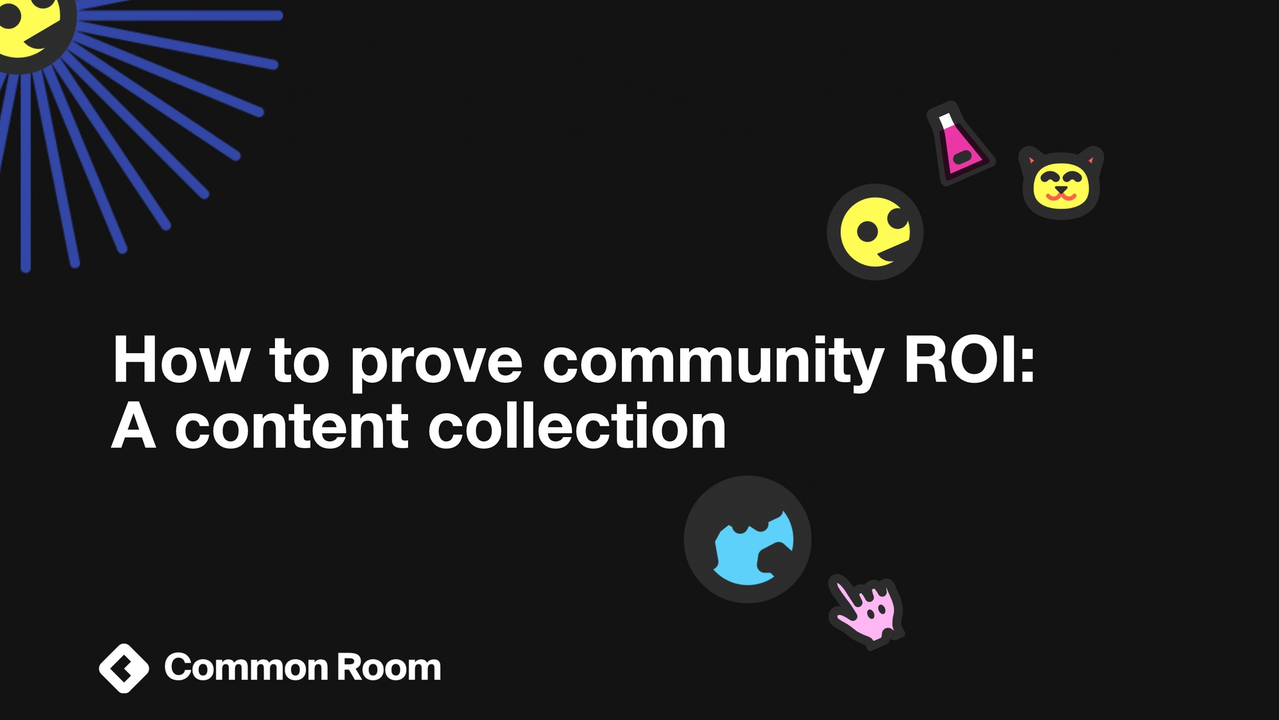Across the previous two weeks, we’ve shared content collections around how to seed your community and how to scale your community. Once you’ve done that, it’s a laudable accomplishment and you should definitely celebrate, both with your internal teams and the community members you’ve brought together.
After the high-fives and confetti, an inevitable question begins to circulate in stakeholder meetings: “Now what?” Variations of the question include, “How do we know if we’re making the right investment?”, “How are we measuring the effectiveness of the community?”, “How do we know if we’re allocating the right resources to community?”, and “How does the community empower the business?”
As a community manager and leader, your job is both to build external community and to build internal community - a legion of stakeholders who understand that supporting community initiatives supports business initiatives - that believes and sees that a thriving community enables marketing teams to amplify great content and find new voices, product teams to build products users love, success teams to deliver valuable right-on-time education, growth teams to identify new prospects who will truly benefit from your services, and the business as a whole to tap into a user-led flywheel. In short, you need a way to prove the ROI of your community.
Common Room brings together community engagement, product usage, and customer data into a single place, enabling you to quickly understand your community ROI on the business and to easily download and share reports with stakeholders so they can quickly understand it too. For more about Common Room's reporting features, check out our user guide.
In this content collection, we offer a few of our favorite pieces that feature insights and learnings from community leaders across the community and DevRel space.
- Prove community ROI: Scale your community’s impact and empower the business
- Reporting community insights to executive teams
- End-to-end community attribution: Quantifying impact from a revenue perspective
- DevRel community impact strategies from Mary Thengvall and community growth and engagement ideas from Richard Millington
- How to evaluate community growth platforms
The content collection
- Prove community ROI: Scale your community’s impact and empower the business: At CLIX 2022, Josh Grose walked community leaders through four key examples Common Room customers have used to prove their community’s ROI in executive briefings, including community contributing to new business, defining appropriate resourcing and headcount, illuminating which regions needed additional programmatic support, and accelerating the revenue growth of the business.
- Reporting community insights to executive teams: This piece highlights four key areas to consider when creating reports to share with stakeholders, including overall community health and activity (for all stakeholders), key members to nurture (for marketing stakeholders), trending activity to monitor (for product and marketing stakeholders), and important organizations to surface (for success, partner, and revenue stakeholders).
- End-to-end community attribution: Quantifying impact from a revenue perspective: Community members will often be active in your community long before their organization becomes a customer. How should this be measured? We call it community-attributed revenue, and it’s a direct way to demonstrate how community empowers the business to revenue-minded stakeholders.
- DevRel community impact strategies from Mary Thengvall and community growth and engagement ideas from Richard Millington: Longtime community builders across the DevRel, PLG, B2B, and B2C market spaces like Mary Thengvall and Richard Millington have tried and tested all kinds of strategies for building healthy, engaged, and thriving communities that empower both their members and the businesses behind them.
- How to evaluate community growth platforms: It’s clear that community leaders need more powerful tools and platforms that have been specifically designed to help them support their members and scale their community impact. How does one decide which platform is right for them? We put together this evaluation guide and accompanying template so you can understand which platform will serve you, your community, and your business’ goals best.
Proving your community’s ROI is a critical step in earning stakeholder buy-in and setting your community up for enduring success beyond the seed and scale stages. Community work is ongoing, and we’re excited to offer the tools you need to keep bringing your organization closer to your community, and to keep showing with data what you already inherently know: That strong communities empower strong businesses, and vice versa.
To better engage your community and demonstrate its impact on the business, get started with Common Room for free. Want to connect with 1000+ community and DevRel leaders all sharing expertise around scaling and empowering their communities? Join Common Room’s Uncommon community Slack.
